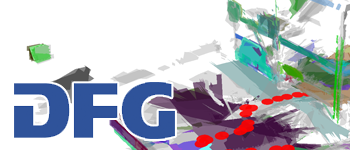Surface Representations for 3D Mapping
A Case for a Paradigm Shift
- Links
- Metadata at SpringerLink.
Abstract
Point clouds, i.e., sets of 3D coordinates of surface point samples from obstacles, are the predominant form of representation for 3D mapping. They are the raw data format of most 3D sensors and the basis for state of the art algorithms for 3D scan registration. It is argued here that point clouds have severe limitations and a case is made for a necessary paradigm shift to surface based representations. In addition to several conceptual arguments, it is shown how a surface based approach can be used for fast and robust registration of 3D data without the need for robot motion estimates from other sensors. Concretely, a short overview on own work dubbed 3D Plane SLAM is presented. It features an extraction of planes with uncertainties from 3D range scans. Two scans can then be registered by determining the correspondence set that maximizes the global rigid body motion constraint while finding the related optimal decoupled rotations and translations with their underlying uncertainties. The registered scans are embedded in pose-graph SLAM for loop closing and relaxation.
Bibtex:
@Article{Birk2010,
author="Birk, Andreas and Pathak, Kaustubh and Vaskevicius, Narunas and Pfingsthorn, Max and Poppinga, Jann and Schwertfeger, S{"o}ren",
title="Surface Representations for 3D Mapping",
journal="KI - K{"u}nstliche Intelligenz",
year="2010",
volume="24",
number="3",
pages="249--254",
issn="1610-1987",
doi="10.1007/s13218-010-0035-1",
url="http://dx.doi.org/10.1007/s13218-010-0035-1"
}
